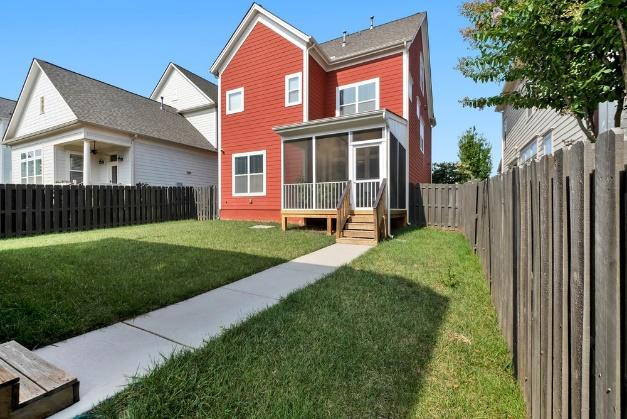How Much Is Window Tinting?

How Much Is Window Tinting?
At Metro Tint, we know most people are familiar with car window tinting, but aren’t really aware of the many benefits of home window tinting. Tinting your home’s windows is a great way to increase your home’s energy-efficiency, privacy, and safety. However, the main question many people have is, what is the cost of window tinting?
In this comprehensive guide, we will explore the window tinting cost, different types of window tint films, and all the benefits you should know before choosing your installation. This guide provides a thorough look at how pricing can vary depending on film type, square footage, and project complexity. While most of this article focuses on residential window tinting, many of the same materials are also used in car tinting projects.
How Much Is Window Tinting?
As per HomeAdvisor, the cost of tinting windows ranges from $316 to $936, with the national average around $607. The cost of the window tint films typically runs between $5 to $10 per square foot for labor, with material costs varying based on film type. Specialized options like ceramic tint or carbon tint can range higher, especially for premium installations.
There are minimum prices, which at the time of this writing are $350–$500 depending on distance, the type of service, and whether there is existing tint that needs removal.
What Factors Determine Window Tinting Prices?
Calculating the cost of window tinting depends on a couple of factors. Costs can vary from the national average because of window shape, size, and style. Also, the location of the windows, the type of film used, and the labor cost in the area you live are some other factors you need to consider when going for window tinting. The overall price can vary depending on accessibility, film technology, and scope of the project.
1. Window Shape, Style, and Size
The window shape, style, and size impact the cost of window tinting. Flat windows are usually easier to treat and are less costly. Curved windows need more equipment and skill and are costlier. Large bay or picture windows and sliding glass doors will cost more because they require large sheets of tint films.
2. Placement of the Windows
The installation is generally cheaper when the windows are on the ground floor and easy to access. Higher floors can require scaffolding or special equipment, increasing the cost.
3. Quality and Type of Film
Window film generally costs anywhere between $2 to $14 per square foot, excluding installation. The exact cost is dependent on the quality and type of film used. Certain window tinting films are used for decorative uses, whereas other kinds are of superior quality and designed to lower energy costs.
Decorative Film: Decorative film costs between $6 and $13 per square foot. These films can increase curb appeal and privacy. This type of film is generally used in front doors and bathrooms to let light pass through while upholding privacy.
Metalized Film: Metalized window tint is an excellent option if you are looking for heat regulation and privacy. The film has a metallic sheen that adds strength to your windows. Moreover, a metalized film made of aluminum or nickel deflects heat and keeps the window and glass cool.
Carbon Film: Carbon tints prevent fading and sun glare due to ultraviolet rays. This film blocks light and heat to reduce cooling costs and regulate temperature. Compared to dyed film, carbon tint provides better performance and durability.
Dyed Film: Dyed film is one of the most budget-friendly options. This dyed tint option is a great starter choice for basic privacy and UV resistance without the higher cost of advanced films. While it doesn’t offer as much heat rejection as higher-end films, it does provide a uniform look, reduces glare, and offers some degree of UV protection.
Window Tint Pricing Guide
Choosing the right type of window tint involves balancing performance, aesthetics, and cost. Whether you’re looking for better privacy, added safety, or reduced energy bills, there’s a film suited to your goals and budget. Here are the costs of some of the most common types of window tints:
1. Ceramic Film
Ceramic tint costs between $10 to $20 per square foot. It can effectively block almost 50 percent of ultraviolet rays without reducing visible light transmission. This high-performance film is non-metallic and offers superior heat rejection and clarity. Many Texas homeowners prefer ceramic film for its balance of comfort and efficiency. It’s also made with nano ceramic particles, which enhance durability and optical clarity.
2. Security Film
Security films cost $9 to $15 per square foot. These films make it harder to break glass, helping prevent or reduce damage from accidents, break-ins, and extreme weather. They also provide added uv protection, and help provide UV protection throughout the home by reducing exposure to harmful rays.
3. Solar Window Film
Solar window film typically costs $8 to $14 per square foot. It reduces solar heat while still allowing in natural light. Some solar films also help retain heat in winter months, enhancing year-round efficiency. Solar films offer glare reduction and help maintain indoor comfort.
4. Smart Glass
With an average cost of $115 to $150 per square, you could purchase a switchable film that will transform your window to “smart glass” that you can adjust using your home automation system or smartphone. It generally comes as a special kind of window glass. However, you might be able to retrofit an existing window in your home using a film.
Benefits of Window Tinting
To put some actual numbers on the effectiveness of tinting: It can lead to the reduction of as much as:
85 percent of sunlight heat, which can make almost 15 degrees of difference
Up to 99 percent of the ultraviolet rays
Nearly 95 percent of the glare.
Let’s look at some of these benefits in detail.
1. Reduces Glare
Glare inside the home is due to sunlight coming in through your windows. During daylight, this glare is going to impact your ability to use any equipment with a screen, such as your cell phone, television, or laptop. Applying a tint eliminates the need to draw curtains during the daytime or move around your equipment, allowing for a more enjoyable and fun media experience.
2. Minimize Air Conditioning Use
Depending on the local weather conditions or the season of the year, tinting can make all the difference between using or not using the AC because of its effectiveness. Excellent heat rejection helps lower cooling costs. This reduction in energy use can also benefit long-term energy efficiency.
3. Additional Safety and Privacy
If you like to leave your blinds or curtains open during the day but still want increased privacy from neighbors, you can opt for a privacy window tint – minimizing or eliminating their ability to look inside. Besides adding privacy, these tint films also make your home more secure by obscuring views of who or what is inside.
4. Limit Sun Damage
Tinted windows protect wood furniture and carpet from repeated exposure to the sun, particularly if you have large-sized windows or glass doors where sunlight pours directly onto flooring and furnishings. This reduces fade and helps preserve the appearance of high-value interiors.
Ready to Transform Your Windows?
At Metro Tint, we offer professional window tinting and security solutions across Dallas TX, Fort Worth, and North Texas. We use high quality materials, provide expert installation, and back our work with industry-leading warranty options.
If you’re wondering about the best tint for your space, contact us today for a free estimate and experience the benefits of professional window tinting services in Dallas and beyond!
Looking for specialized residential solutions? Check out our Residential Window Tinting services to see how we can help make your home more energy-efficient and secure. For added protection, explore our Security Window Film options designed to enhance glass strength against impacts. Interested in boosting comfort and efficiency? Learn more about our Solar Control Film solutions that combine superior heat rejection with UV protection.


